Rebuilding
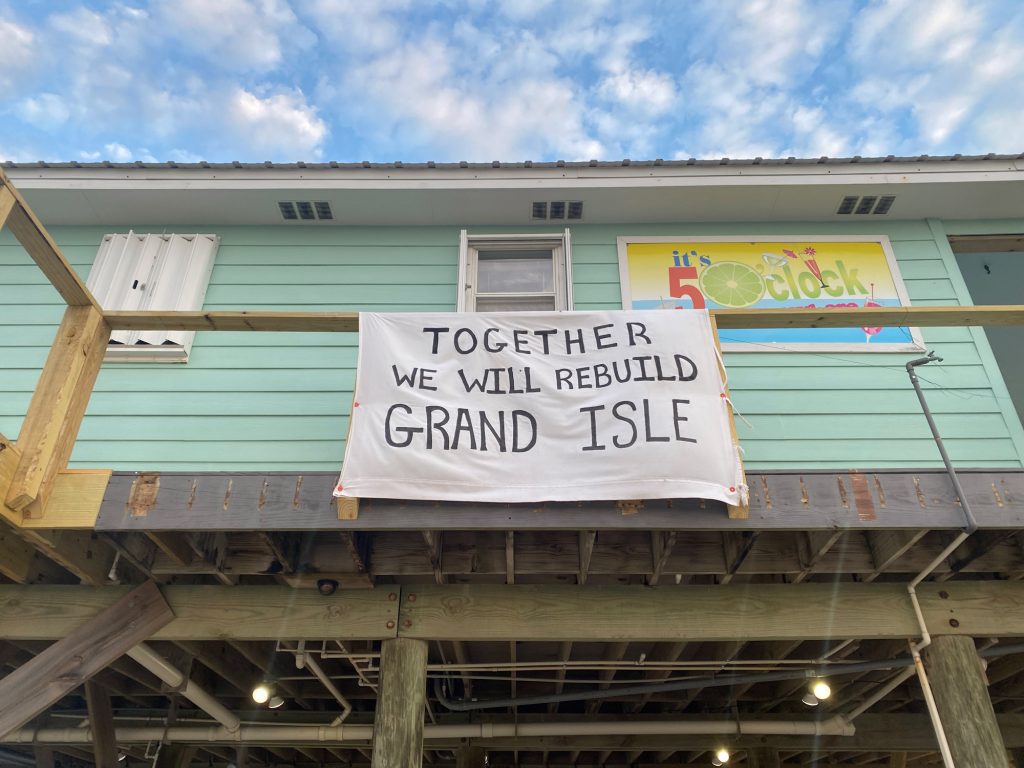
by Karly Taranto, staff writer Grand Isle is home to about 1,460 people, many of whom are still recovering from Hurricane Ida’s devastation. It is also a second home for many camp owners, some of whom say they are debating whether to rebuild or demolish. “We had about $80,000 in wind insurance, but rebuilding would cost over $250,000 with the cost of materials,” says camp owner Paul Hymel. Hymel says he co-owned the camp with his brother, two uncles and grandmother. Following the hurricane, only the foundation stood in the place of what he says was once a second home for his family. “My uncles and grandmother do not have much interest or need to have a camp there, so that leaves my brother and I to do anything with it,” says Hymel. “We just don’t have the time to do the construction and, frankly, do not have the know-how or people who could help us; not mentioning the cost it would take us to rebuild.” The Federal Emergency Agency (FEMA) has strict requirements regarding the rebuilding process. A new policy requires coastal structures to be built 16 feet above the ground to protect them from wave and flood damage during natural disasters. The homes that did not meet the required elevation received less insurance money for the property destruction from Hurricane Ida. The Hymel family’s camp is a 1950’s home that was elevated to 10 feet and has not been remodeled. Because of increased insurance costs due to their camp being below elevation requirements, the only insurance the family could afford was wind insurance. However, they did not receive enough money to consider rebuilding.Following the aftermath of Hurricane Ida, new building codes are being implemented. Height requirements and wind-proof building materials are now required, and insurance costs will increase for homeowners on the island. Insurance adjusters are assessing homes to determine if rebuilding or repairing will be required for each home. If adjusters deem that a house is over 50 percent damaged, owners will be required to demolish. “Because of the extent of damage, building codes becoming more stringent and cost of materials rising, I think you will see a lot more selling rather than rebuilding,” says insurance agent Chris Hogan. “The building codes will require more money, which will make it harder for people who own camps to rebuild on the island, especially if starting from scratch.” “Because of the extent of damage, building codes becoming more stringent and cost of materials rising, I think you will see a lot more selling rather than rebuilding.”— Chris Hogan, insurance agent Though organizations like the Bayou Community Foundation have raised over $4,000,000 to contribute to rebuilding and recovery, the significant increase in general building costs will leave an abundance of empty lots in Grand Isle. Hymel says many camp owners who were left with nothing have discussed putting awnings on their property and bringing campers to the island instead of rebuilding. “Options for us would be purchasing an older camp or rebuilding; either way it is extremely expensive or not worth it due to the risks of natural disasters in the future,” says Hymel. “Lots of memories were made on the island in our camp that no longer exists.” Home completely destroyed in Grand Isle following Hurricane Ida. Grand Isle home damaged from Hurricane Ida. Paul Hymel and his daughter fishing on the dock with their family camp in the background. Paul Hymel’s land where their camp used to be, nothing was left except the pilings featured. Grand Isle home destroyed from Hurricane Ida. The Road to Rebuilding
Aid to Help Island Recovery
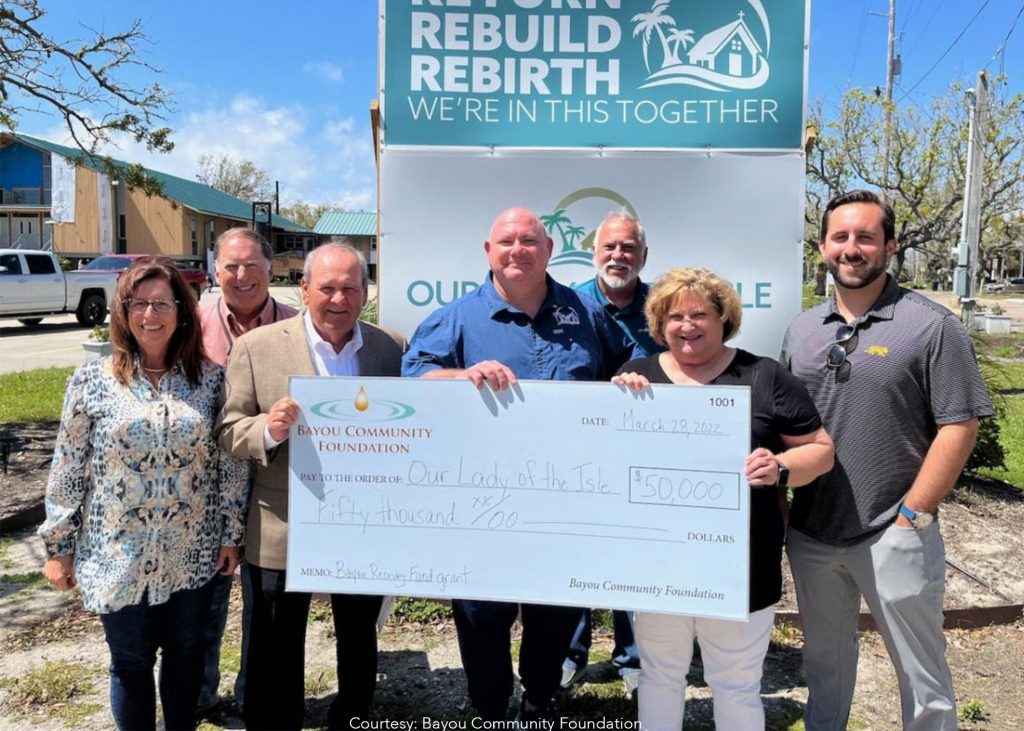
By Karly Taranto, staff writer The Recovery from Hurricane Ida’s devastation has been ongoing since the day after landfall for the Islanders. There has been an abundance of helping hands from different groups across the state. The Bayou Community Foundation (BCF) began awarding assistance grants in October 2021, so far totaling $4,365,918 in aid relief. Jennifer Armond, coordinator of the Bayou Community Foundation (BCF), says grants will continue to be awarded as they become available. Grants through the BCF are not limited to rebuilding purposes only. They also provide hot meals, supplies, and financial assistance to help families in need. There is a lack of housing on the Island even though it has been 7 months since the hurricane. Many families are relocated, but slowly returning to Grand Isle. “We are working on a larger housing effort for Grand Isle right now,” Armond says. Physical support like this was needed to get Grand Isle back up and running, but assistance for families was also necessary during what was, to many, an emotional time. Families lost jobs and income to provide for themselves and their families. “It was amazing to see the generosity of other home and camp owners on the island after everything was said and done, it was a very emotional experience.” — Michelle Wool, camp owner Janet Scardino, Mayor’s Assistant in Grand Isle, says The Benson Charitable Foundation reached out to us in regards to bringing toys here for the kids around Christmas time. The Benson Foundation is a charitable foundation from New Orleans, founded by Tom and Gayle Benson. “They came in with truck loads of toys for the kids here; we put out the toys on tables for the kids to choose from and we still had crates of toys left over, it was amazing,” says Scardino. “There were toys ranging from wireless headphones for the older kids to nice backpacks from Disney World.” The town of Grand Isle experienced additional help that played a significant role for them getting back onto the island following the devastation from Hurricane Ida. Family and friends worked together to pick up debris at camps and houses. They brought water and food to people who needed it. “As we cleaned what was left of our camp shortly after the hurricane, we had at least 10 to 12 people stop and offer a hand in our cleaning process; along with anything else we could possibly need,” says camp owner Michelle Wool. Alternative to money, manual labor assistance was provided for demolitions. Many people from other areas of Louisiana traveled to the island to offer help in cleaning up, along with helping to salvage what was able to be saved. The National Guard helped clear roads and debris from the Island immediately following the storm. Other organizations such as Catholic Charities, United Houma Nation, and the Cajun Navy assisted Grand Isle, as well. “I believe we partner with organizations to make a difference in our local community, but also to make a bigger impact across South Louisiana,” says Sherry Rhodes with Catholic Charities. The people of Grand Isle stay hopeful that assistance will continue to come as they recover from the natural disaster. Wool says, “It was amazing to see the generosity of other home and camp owners on the island after everything was said and done, it was a very emotional experience.” https://youtu.be/UEXrVy7tcRI
Coastal Restoration
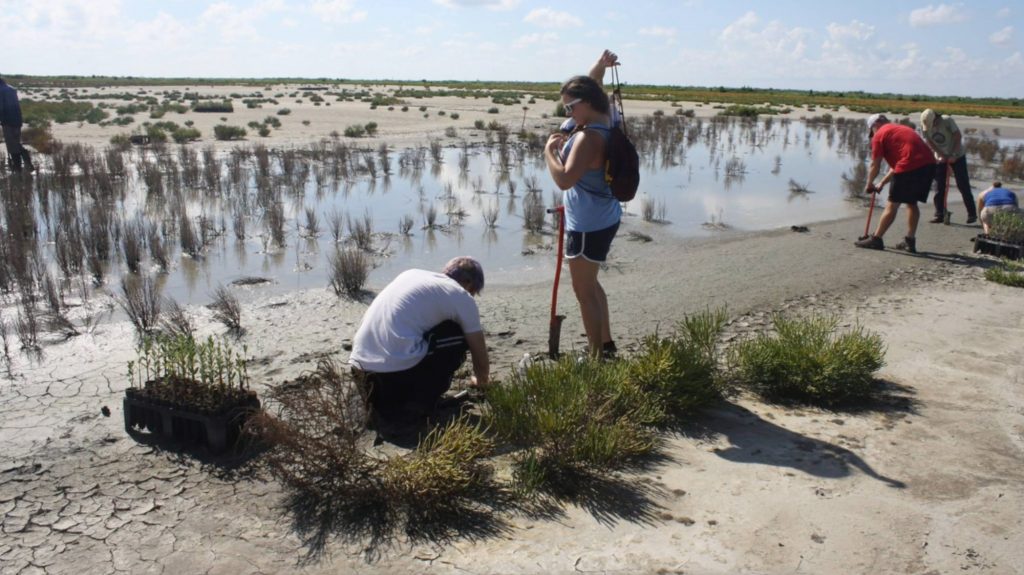
By Kelsi Chapman, Podcast Editor
Insurance Challenges
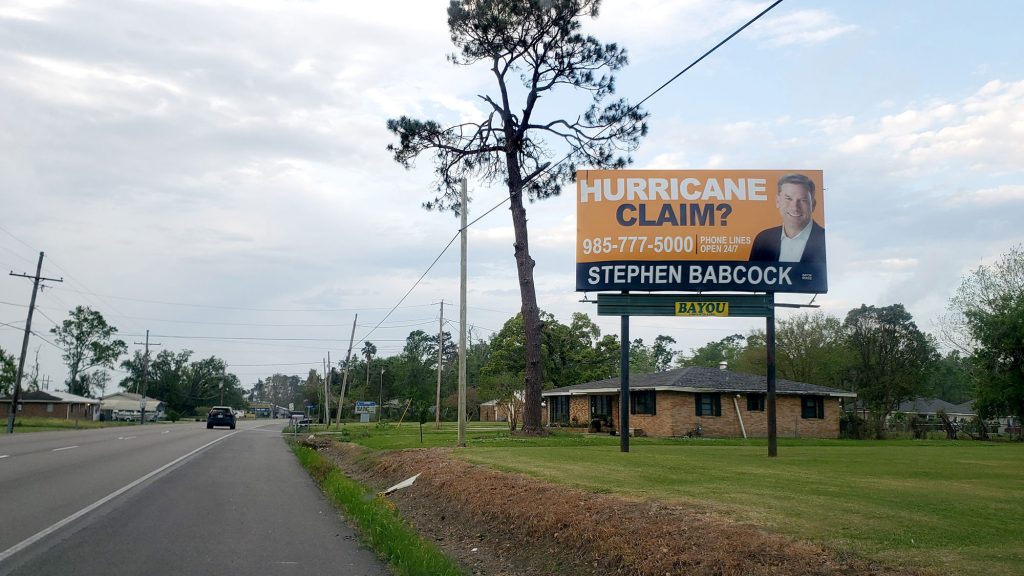
By Jonathan Eastwood, features editor Many Grand Isle residents that survived Hurricane Ida are now faced with rebuilding damaged houses and camps. But, for some, insurance is not paying enough to cover the cost of damages, leading them to take legal action. “I used to live at our camp, and it was a beautiful camp,” says Dane Baker, whose family camp on Grand Isle was severely damaged in the storm. Baker said his family’s property received upwards of $40,000 in damages, but insurance was only willing to pay $2,000. He says because of this, the camp will have to be demolished. “The insurance is doing us dirty,” Baker says. “We’re probably gonna have to knock down our camp completely because we’re not gonna have the money to fix it. It really makes me sad – it makes me so sad to be treated this way by the insurance company and have to just destroy the thing I love so much.” “The insurance is doing us dirty. It makes me so sad to be treated this way by the insurance company and have to just destroy the thing I love so much.” — Dane Baker, camp owner Michael Johnson, a public building consultant, says he inspected a home in Grand Isle that sustained enough damage to shift the building on its foundation. However, its owners still received insurance estimates lower than necessary to fix the damage. “This particular one, I’ve already written the estimate on it,” says Johnson. “My estimate was three times more than her [insurance] estimate.” Some are taking legal action against their insurance companies. Attorneys are reaching out to help the public with their claims. At a public meeting for those curious about moving forward with claims against their insurance companies, attorney Michael Moore presented a scenario that may take place if legal action is not taken. “It’s been 193 days since Hurricane Ida hit – we shouldn’t be having this conversation right now,” Moore says. “But the scarier number is that it’s been 560 days since [Hurricanes] Laura and Delta hit Lake Charles and it’s still nothing but blue tarps [on the roofs].” Attorney Beau Brooks says he heard stories of insurance companies refusing to contact their clients whose homes were in unlivable conditions. This is not only localized to Grand Isle, but much of South Louisiana, says Brooks. “It doesn’t matter if you’re in Grand Isle, if you’re in Cutoff, or if you’re in Larose – you’re just seeing a lot of people continuing to have problems with their insurance companies paying,” says Brooks. Baker’s grandmother recently began legal proceedings against the family’s wind insurance provider to seek the compensation she says they are owed. “There’s no reason why you pay a company for years and years, give them tens of thousands of dollars, and then they don’t wanna help you out at all,” Baker says. “That’s just plain wrong.”Some people with property on the island say they received adequate payment from the start and do not need to seek legal action, but they also acknowledge the trouble others currently face. “Some people did good, some people had to get lawyers,” says Donnie Camardelle, a Grand Isle camp owner. “There might be two out of 10 [that are] satisfied.” Hellickson Public Adjusting sign in Grand Isle Babcock billboard on Hwy-24 Baldone billboard Hwy-24 Legal meeting Attorney Beau Brooks’s meeting at Politz’s in Thibodaux. St. Martin-Bourque Billboard on Hwy-24
Island Water Quality
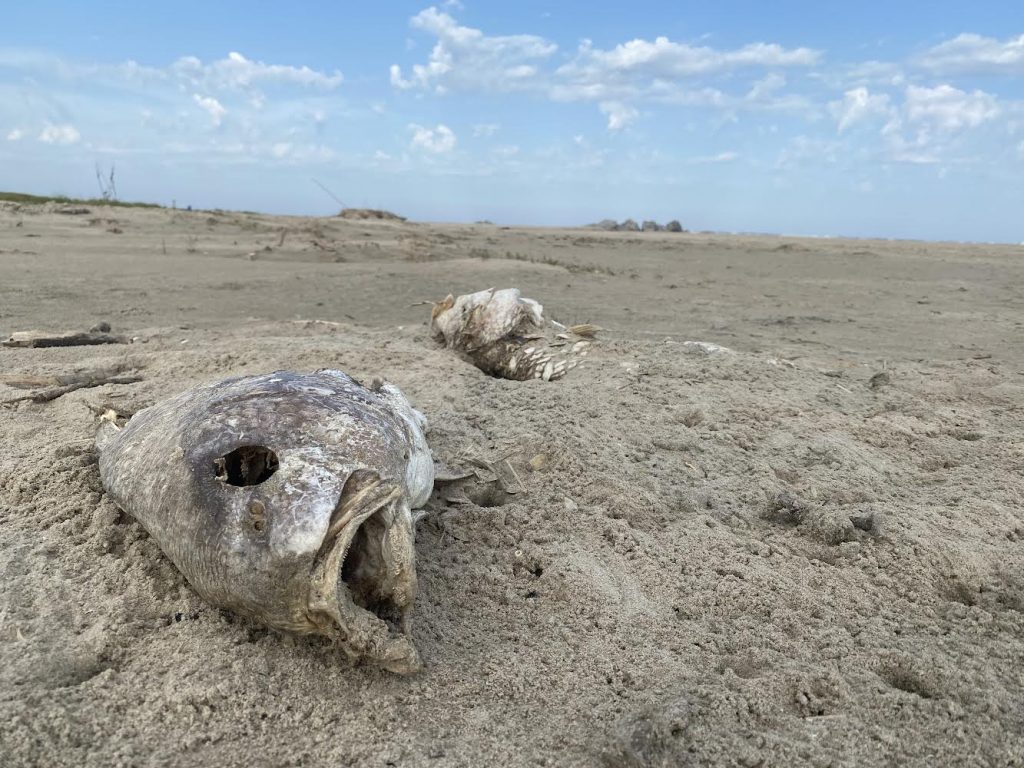
By Brittany Chaisson, staff writer Much of Louisiana’s coastal waters are polluted, but Grand Isle’s location at the mouth of the Mississippi River and its human inhabitants make its waters particularly susceptible to contamination. Experts say that agricultural runoff and marine debris are the leading cause of water pollution on Grand Isle’s coast. “The thing that we think about at Grand Isle every summer is the hypoxic zone,” says biologist Dr. Gary Lafleur. Dr. Andrew Willis, another biologist, says “It’s nothing that farmers are doing wrong, it’s just the nature of things.” “It’s nothing that farmers are doing wrong, it’s just the nature of things.”— Dr. Andrew Willis, biologist Dr. Willis explained that this fertilizer-contaminated water from the northern United States empties all the way down to the Gulf of Mexico where it collects along Grand Isle’s coast. As the water from the Mississippi flows into the Gulf, it floats above the denser salty seawater. This causes a separation where the freshwater and saline water meet, which prevents oxygenated surface water from oxygen-poor water on the bottom of the Gulf. These events create a hypoxic zone. According to the Environmental Protection Agency, hypoxic zones are becoming more frequent as human inputs of these nutrients increase. “When it comes to the water quality for fisheries and human health…the biggest source is from malfunctioning home sewage systems and camp systems,” says Andrew Barron, a member of the Barataria-Terrebonne National Estuary Program. This malfunction can happen after bad storms when power outages cause water treatment systems to lose pressure. This loss of pressure prevents contaminants from entering through the cracks of pipes. “The biggest issue is the high concentration of nutrients that lead to the formation of the area of hypoxia,” says barrier island researcher Willis. “This low water dissolved oxygen is bad for sea life”. The excess nutrients in the water cause an overgrowth of algae on the water’s surface. This area of deoxygenated water is called a “dead zone”. The dead zone causes hypoxia in small sea creatures like shrimp in crabs, which quickly kills them. Larger marine life, like fish or shellfish, are not able to find a proper habitat and food, so their numbers deplete. This depletion in the fish population can negatively affect the local economy, which relies on the fishing industry. A dead zone creates a phenomenon locals call a “Jubilee.” Lafleur explains that it is called a “Jubilee” because of the “drunkenness” caused by the upward movement of oxygen-poor waters, which forces fish and crustaceans from the bottom of the hypoxic zone ashore. “Sometimes you can see crabs and speckled trout, almost acting as if they’re drunk,” says Lafleur. “They’re not dead yet, but they’re not swimming well.” In this “drunken” state, it is much easier to fish without netting. Because hypoxia doesn’t pollute or poison the fish, they are still consumable. The marine life of Grand Isle is also harmed by marine debris such as oil and human waste. “We’re still feeling the effects of the BP oil spill, which was more than 10 years ago,” says Lafleur. “After the BP oil spill, it appeared that the oil just disappeared from view, it sank to the bottom offshore and it can stay in the sediments offshore”. Lafleur says that every time a storm has come over the last ten years, sediment has been stirred up, and oil returns to the shoreline. When this happens, organisms that burrow in the sand along the coast get contaminated. This contamination spreads when sea life or birds consume the contaminated organisms. A popular tourist destination, Grand Isle attracts thousands of visitors to its beaches each year Human waste such as plastic bags and trash can pollute the island’s water. Tourists and offshore oil rigs both to Grand Isle’s pollution. “The physical material, the trash, the garbage is intimately connected to the water quality,” explains Barron. “All of the water around Grand Isle receives quite a bit of debris.” When trash enters the Gulf it becomes marine debris. Land surveyors find that there is a constant supply of this debris which harms the sea life who consume it. “Methods of industrial work create factors such as an agricultural runoff, oil spills, and marine debris, which all contribute to the harmful consequences on those who live and fish on the coast.” Loading…
Grand Isle Origins
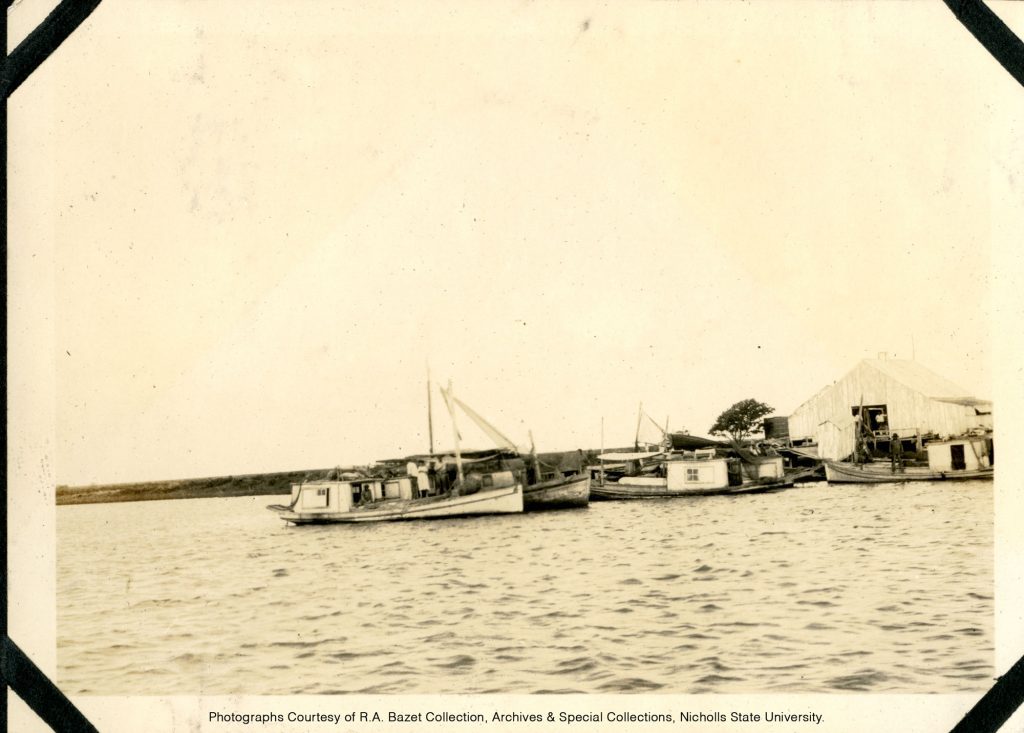
By Cayden Stump, staff writer Although Grand Isle was discovered in 1528 by French explorers, ownership of the island alternated between the French and the Spanish for a while. According to Tiffany Kleynhans, former resident of Grand Isle, the French ultimately took control in the 1720s due to the island’s proximity to New Orleans. Before these explorers discovered Grand Isle, the Chitimacha Tribe hunted, fished and planted oak trees at the center of the island. These oak trees provided settlers with protection from the elements. Kleynhans, a Thibodaux resident, has ties to Grand Isle from her great-great-great-great-great-great grandfather Jacques Rigaud, who was one of four people who received a land grant and was ordered to make the land usable. In 1781, Spanish Governor Bernardo Vicente de Gálvez y Madrid gave the first land grant to Jacques Rigaud and his brother with a promise to make something of the land. The Galvez brothers decided to raise cattle and plant orange groves, which marked the start of the land’s development. Additional crops like sugarcane and cotton were also harvested, according to the Town of Grand Isle. Grand Isle became a part of the United States in 1803 after the Louisiana Purchase. At this time, crops were shipped to New Orleans, plantations appeared on the island and slaves tended to the land. “There were a lot of free African Americans on the island as well that worked on the farms and plantations,” says Kleynhans. During this time, pirates came from all over to raid Spanish ships, including slave ships. Pirates made most of their money by kidnapping slaves from Spanish ships and selling them to plantation owners in New Orleans. Kleynhans says, “The whole pirate thing is romanticized, and it seems so cool, but the sad thing is they would raid Spanish slave ships and steal the slaves and sell in New Orleans.” “The whole pirate thing is romanticized, and it seems so cool, but the sad thing is they would raid Spanish slave ships and steal the slaves and sell in New Orleans.” — Tiffany Kleynhans The people of Grand Isle farmed, fished and exported their products to New Orleans during this time. In the late 1800s, wealthy people from New Orleans built a resort hotel on Grand Isle’s beach, and according to Kleyhans, people came to the island because they believed its water could heal them. “Business was booming ‘till the 1893 hurricane came and destroyed and washed it all away,” says Kleynhans. Following the Cheniere Caminada Hurricane, the community was able to rebuild what was destroyed on the island. After this, the prohibition era began, and members of the mafia owned and used a local marina as a cover for shipping out alcohol. In 1930, a lawyer named Danziger pushed for a bridge to be built so that people would no longer have to use a push barge to access Grand Isle from the mainland. Once the bridge was built, oil companies and tourists began to arrive, eventually making Grand Isle what it is today – a tourist destination and oil-industry hub. The Town of Grand Isle’s website states, “Today, the island is home to around 1,500 locals, who make a living from the seafood and oil industries. More than 12,000 tourists visit the island annually to participate in fishing rodeos and enjoy the wide open beaches and countless bird sightings.” While the current state of Grand Isle is vastly different from its origins, the things that have taken place since its discovery have shaped it into what it is today. Photo by Betsy Swanson, Grand Isle on the Gulf Slave Cabins Photo by Betsy Swanson, Grand Isle on the Gulf Land Grant Photo by Betsy Swanson, Grand Isle on the Gulf Hotel destruction for hurricane Photo by Betsy Swanson, Grand Isle on the Gulf
Island Pirates
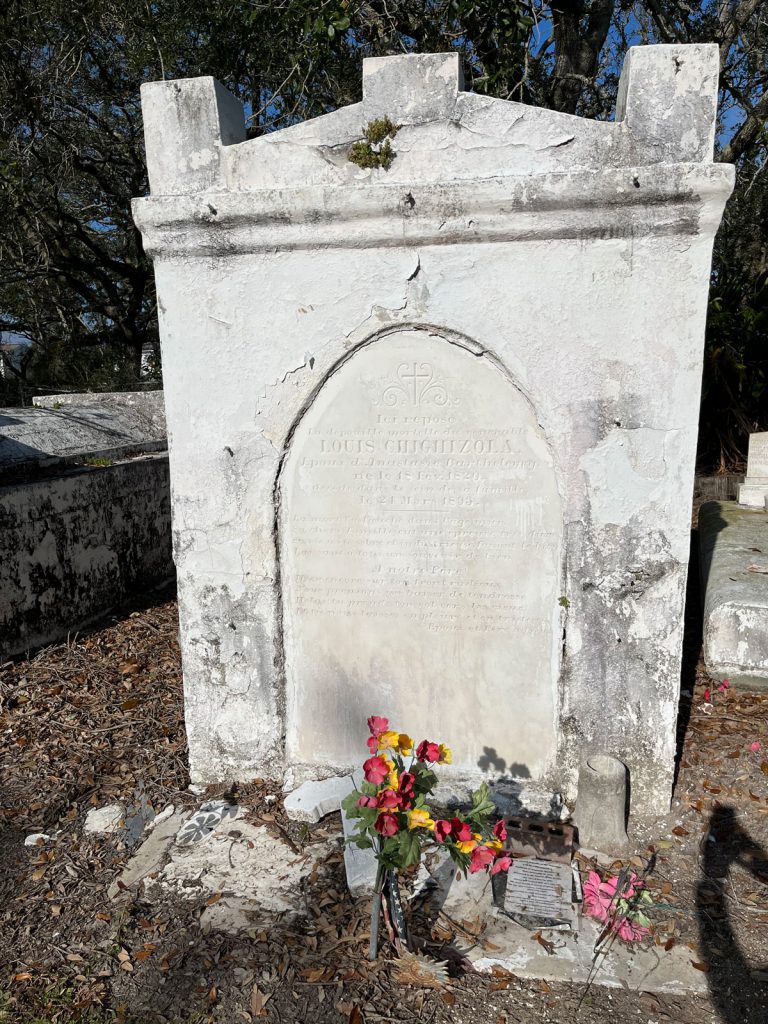
By Paul Gagneaux, staff writer In the past, many pirates sailed around the island areas of Louisiana. Although many of these pirates are gone, some of their descendants and relics of their history remain in Louisiana’s coastal areas, like Grand Isle. “One of them is actually buried right in my backyard, and not many people are aware of the fact that he’s here,” says island resident Helen Tabor. “One of them is actually buried right in my backyard, and not many people are aware of the fact that he’s here.” — Helen Tabor The most well-known pirate in Louisiana’s history was Jean Lafitte. According to the National Endowment for the Humanities, Jean Lafitte was known for his crew, as well as aiding in The Battle of New Orleans. Historians say he bordered the line between hero and criminal, and he preferred the term “privateer” over pirate when referring to himself and his crew. According to the National Park Service, Jean Lafitte and his crew of Baratarians (as he called them) insisted that if they ever committed a crime it was the fault of America for making laws that were so restrictive. Louis Alcide Chighizola, Jr., the son of Jean Lafitte’s lieutenant Louis Chighizola, died March 24, 1893 and is buried in Grand Isle Cemetery. His father, nicknamed Nez Coupe, pirated alongside Lafitte and eventually settled on Grand Isle, where he raised his family. Nez Coupe even made an appearance in the 1958 film The Buccaneer. Pirates played a prevalent role in American history, especially between the 1700s and 1800s. According to the National Endowment for the Humanities, pirates held a leading role in developing commercial structure and port towns in America. According to a history-based website about the origins of Grand Isle, Nez Coupe and Jean Lafitte set up base in Grand Isle to attack Spanish ships, steal treasures and resell them in New Orleans. However, they did not do this often because Grand Isle did not have a harbor at the time, which made it hard for Jean Lafitte and his men to work from there. Jean Jafitte and his men were forced to leave Grand Isle in 1814 by the government, but many of his men stayed behind and retired. Nez Coupe was one of the men who decided to stay in Grand Isle, where he later had his son Louis Alcide Chigizhola Jr. As such, the Chigizhola family line continued to grow within Grand Isle. Members of the Chighizola family still reside on the island to this day. “I think it’s pretty cool being related to a pirate,” says Pj Chighizola, a descendant of Nez Coupe and Louis Alcide Chighizola, Jr. and a Grand Isle reserve police officer. “I was born and raised in Grand Isle where Jean Lafitte and Louis Chighizola spent a lot of time, and they are part of the history of Grand Isle, so I am proud to be a part of the history of our little town.” Louis Chighizola Jr grave Battle of New Orleans Painting from Grand Isle Louis Chighizola Jr grave Note left in front of Louis grave The Destruction of some of the Graves in Grand Isle after Hurricane Ida.
Island Industry
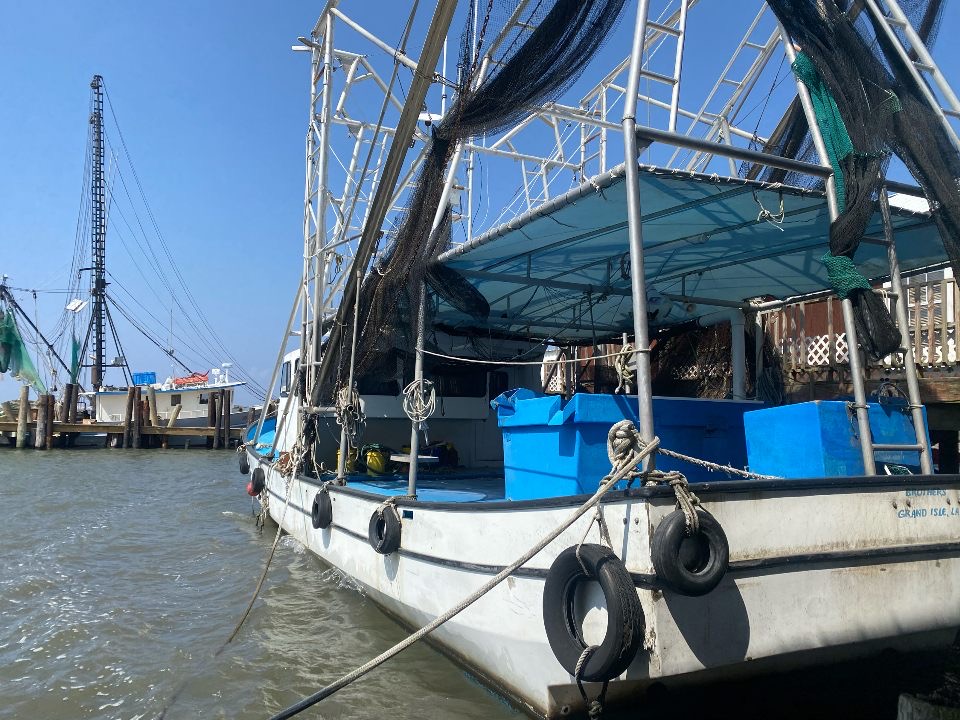
By Alaina Pitre, staff writer Grand Isle, Louisiana, is home to several industries including oil, seafood and fishing, tourism and several types of recreation like surfing and birding. Over time, natural and historical factors have caused significant shifts in these industries. Located on the Gulf of Mexico, fishing and seafood are two prominent industries on the island. Grand Isle is home to the oldest fishing tournament in the United States, The Grand Isle Tarpon Rodeo, established in 1928. “Commercial fishing is the livelihood of the town of Grand Isle,” says Weldon Danos, executive director of the Grand Isle Port Commission. “Commercial fishing is the livelihood of the town of Grand Isle.”— Weldon Danos, executive director of the Grand Isle Port Commission. These industries attract tourists, making Grand Isle a common vacation destination to South Louisianians. Grand Isle’s tourism scene was established in the early 19th century, and it was mostly visited by South Louisiana’s wealthy planters and New Orleans’ elite. In addition to economic shifts in Grand Isle’s industries, historical and environmental factors have made significant contributions to industry shifts. Some of the most impactful shifts are caused by erosion and hurricanes. Rickey Collins, owner of Jo-Bob’s Gas & Grill and longtime Grand Isle resident, says that he has seen significant industry shifts in his time on the island. “In the early eighties there was a massive oil field presence in Grand Isle,” Collins says. “It was a huge clientele for the island and now they’ve all left.” Collins says big oil companies like Exxon and Conoco had bases and installations on the island. He says it was a big business for Grand Isle, but island business has now transitioned primarily into tourism. According to Klaus Meyer-Arendt’s Annals of Tourism Research Volume: 12, Issue 3, Grand Isle’s industries can be divided into several developmental phases to define industry changes and shifts. The first stage started in the 1820s and lasted about 70 years when a railroad connection shortened the travel time from New Orleans to Grand Isle, making the island more accessible. A notable business of this time span was The Ocean View Hotel, a luxurious, multi-facility resort that was completely destroyed by a hurricane in 1983. The second stage, from 1893-1945, was geared more towards developing recreational activities. Not only was the Tarpon Rodeo born during this phase, but Highway 1 was also completed, allowing more automobile access onto the island. This period was also accompanied by more hurricane devastation, two world wars, and the Great Depression. Post-war development in the 1950s was heavily impacted by shoreline erosion and beach deterioration due to hurricanes. Despite erosion control measures, this decline in development continued into the 1960s.. Devastating hurricanes such as 1965’s Betsy, 1985’s Danny, Elena, and Juan, 2005’s Katrina, 2008’s Gustav, 2021’s Ida, and many more have remained a consistent threat to Grand Isle and the flow of its industries. As hurricanes continue to impact businesses as well as entire industries, Grand Isle residents feel the effects. “It gets old after a while – it becomes hard,” Collins says. “Rates go up, some businesses and residents don’t recover and leave, and things change every time.” Danos says the seafood and commercial fishing industry as a whole has lost around 1.2 billion dollars from Hurricane Ida’s impact. He says it will take years to fully recover from this loss. “I think the industry is very strong-willed, and they are willing to come back,” Danos says. “They haven’t given up.” Collins says the Grand Isle community is dedicated, even with its ever-changing culture. Collins says, “We won’t give up unless the day comes where the government gives up on us.” https://youtu.be/7p-NgPQFGSo
The People
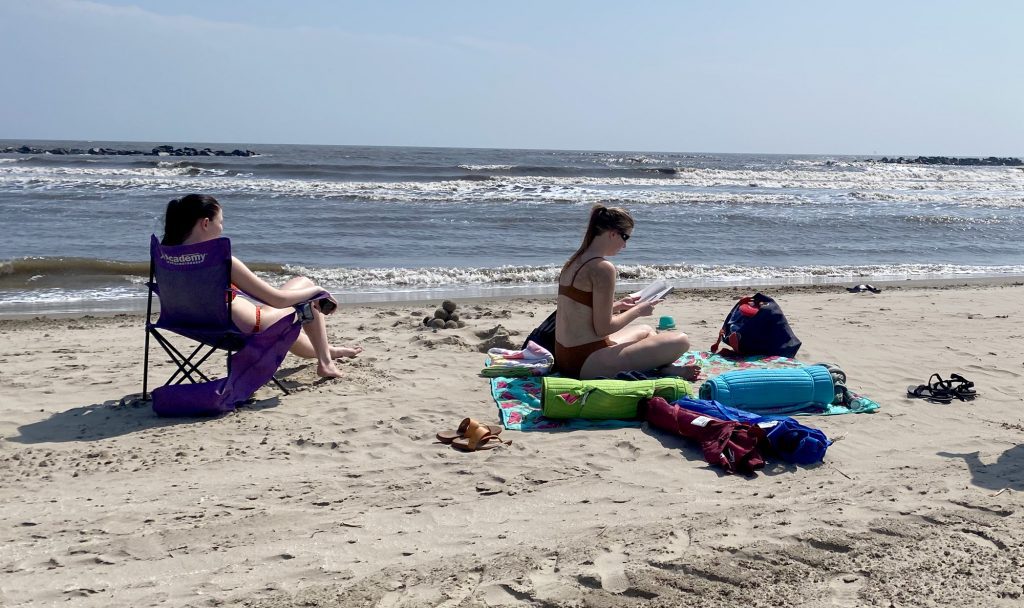
by Jonathan Eastwood, features editor When hearing about people from another area or culture, it can be easy to forget that they are regular, ordinary humans. The people of Grand Isle form a strong, close-knit community. They work, play, and live together on the island. The residents know each other and are friendly to visitors. “They’re very resilient – the entire community is resilient,” says Grand Isle School principal Christine Templet. “They’re very resilient – the entire community is resilient.” — Christine Templet, Grand Isle School principal Grand Isle is often frequented by vacationers – whether they are visiting for the first time or staying in their camp for the summer. Many camp owners grew up frequenting the island with their parents and other family members. Grand Isle is also a location for destination weddings. Not only does the island provide scenic beaches and warm weather, but many couples also have long-lasting ties to the island. Although the people of Grand Isle are currently working on recovering from major hurricane damage, they live one day at a time, simply working together and building relationships.
Liz Watkins

Grand Isle, Louisiana What is your favorite memory from Grand Isle? “I have so many. We started back in the 60’s with my family. My favorite memory, now that my kids are grown with their own families, are thanksgiving, Easter, and the 4th of July. They all come down and visit us to do beach time, volleyball tournaments, cooking, eating, I make desserts for everyone. That’s my favorite memory, being able to expose the kids to this type of living. Riding in the golf cart, going to the store, riding to the post office to check the post office box. Just normal things they don’t get to do living in New Orleans and Houma.” What is Grand Isle’s biggest loss from Ida? “I think the biggest loss is all the camps that the older generations had built by hand and had passed it down from generations. Families would come through and just have fun. Ida took a lot of those camps away, especially in Cheniere and the beginning of the island. I feel like that’s going to be a very big loss because I feel like people that just loved Grand Isle for what it’s worth and the beauty of the island and its people. That’s just something that’s not going to be able to be replaced.” What’s the future of Grand Isle? “I think it will come back. I think the problem is that regular income people will find it hard to rebuild their places. I think it’s going to end up being like the six figure camps or houses that are being put up now. I think the whole atmosphere will be changing. It will likely be more of an upper middle to higher class. The places won’t be like the old places where everyone gets around and goes to grandpa’s old camp. I don’t think people will be able to afford the insurance or the rebuilding. I just think it’s going to be hard for most people to be able to rebuild.”
